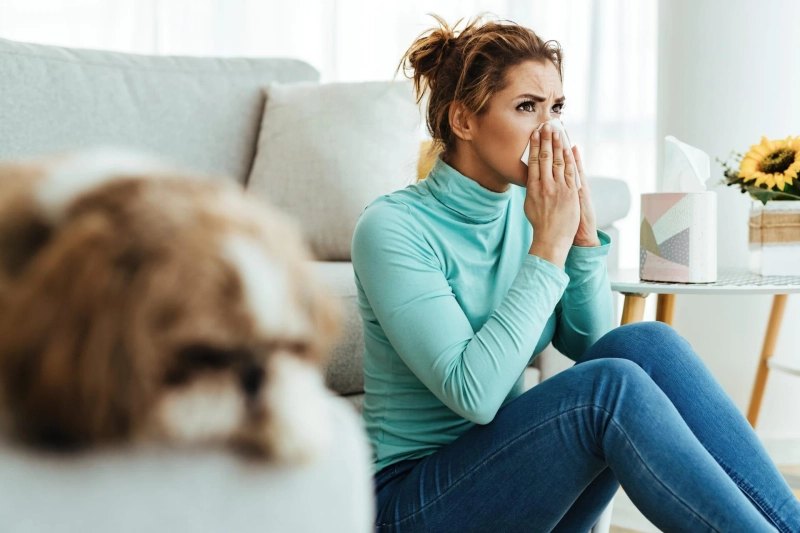Allergens embedded in carpets frequently contribute to lingering respiratory symptoms and indoor discomfort. Carpet cleaning services implement practical, research-based methods to remove these particles and promote better air quality. Scheduled deep cleaning lowers the risk of exposure to dust, pollen, and pet-related contaminants in both homes and commercial environments. Recognizing how these tools and techniques work gives property owners the ability to make more effective long-term choices.
1. Thorough Steam Carpet Cleaning
Steam cleaning, often called hot water extraction, targets ground-in particles beneath the carpet surface. Technicians inject heated water paired with safe detergents into carpet fibers, which loosens allergens before powerful vacuums extract the moisture and contaminants. Studies by the Environmental Protection Agency (EPA) show this method removes as much as 98% of common household allergens. Households using steam cleaning regularly often report fewer asthma flare-ups and improved airflow indoors.
- Loosens stubborn debris within the carpet base
- Flushes out dust mites, dander, and fine pollen
- Refreshes carpets while supporting respiratory health
2. High-Performance HEPA Filter Vacuuming
HEPA filter vacuums are designed to trap tiny particles that ordinary vacuums often release back into circulation. These filters capture irritants such as mold spores, ultra-fine dust, and pet proteins that trigger allergic responses. Verified by the U.S. Department of Energy, HEPA systems collect 99.97% of particles down to 0.3 microns. Users typically notice a visible reduction in airborne dust and experience fewer sneezing episodes after professional HEPA vacuuming.
- Captures allergens other vacuums miss
- Reduces airborne contaminants significantly
- Keeps high-use spaces feeling fresher longer
3. Gentle, Hypoallergenic Cleaning Formulas
Modern carpet cleaning services choose non-irritating, plant-based formulas that work well in allergy-sensitive households. These cleaning agents eliminate grime and allergens without leaving behind synthetic fragrances, dyes, or harsh chemical residues. The Centers for Disease Control and Prevention (CDC) recommends using milder cleaners in homes with vulnerable individuals. Many people living with skin or breathing sensitivities report improved comfort when switching to these safer alternatives.
- Avoids strong scents and harsh chemicals
- Effectively dissolves embedded allergens
- Safer for families with children or asthma

4. Long-Acting Anti-Allergen Treatments
After cleaning, professionals may apply specialized solutions that neutralize common allergenic proteins, offering extended protection. These treatments form a bond with allergen particles like pet proteins or dust mite residues, stopping them from triggering allergic reactions. Research from allergy-focused institutions confirms their benefit in reducing overall exposure indoors. Regular use of these protectants helps maintain cleaner air between deep cleanings.
- Blocks allergen reactivation after removal
- Creates a buffer against future buildup
- Ideal for carpets in bedrooms or shared areas
5. Quick Drying Carpet Solutions
Faster drying methods reduce the chance for mold or mildew to develop in carpet padding. High-powered air movers and moisture extraction tools can complete drying within 6 to 24 hours, depending on humidity and material. The EPA warns that carpets staying damp beyond 48 hours can become a breeding ground for mold spores, which aggravate allergy symptoms. Quick drying also helps prevent musty smells and extends the cleanliness of the carpet.
- Reduces moisture retention risks
- Lowers chances of mold-related allergens forming
- Supports better post-cleaning indoor quality
Key Takeaways for Managing Allergens with Carpet Cleaning
- Hot water extraction clears hidden allergens from deep carpet layers.
- HEPA-filtered vacuums improve indoor air by capturing microscopic irritants.
- Low-toxicity cleaners remove debris without triggering allergic responses.
- Protective treatments keep carpets from quickly re-accumulating allergens.
- Fast-drying methods help prevent mold and mildew growth in damp areas.
Frequently Asked Questions About Carpet Cleaning and Allergens
Can professional cleaning noticeably reduce allergy symptoms?
Yes, cleaning removes trapped allergens, which often leads to clearer breathing and fewer allergic reactions indoors.
Why are HEPA vacuums more effective for allergy control?
They trap particles that conventional vacuums push back into the air, improving air quality.
Are natural cleaners strong enough to sanitize carpets?
Yes, many eco-formulas are lab-tested and proven to break down allergens and bacteria effectively.
Is it necessary to dry carpets quickly after cleaning?
Yes, quicker drying prevents moisture from creating ideal conditions for mold or mildew, which are known irritants.
How long do anti-allergen carpet treatments usually last?
Most treatments are effective for several months and are often reapplied during regular maintenance cleanings.


